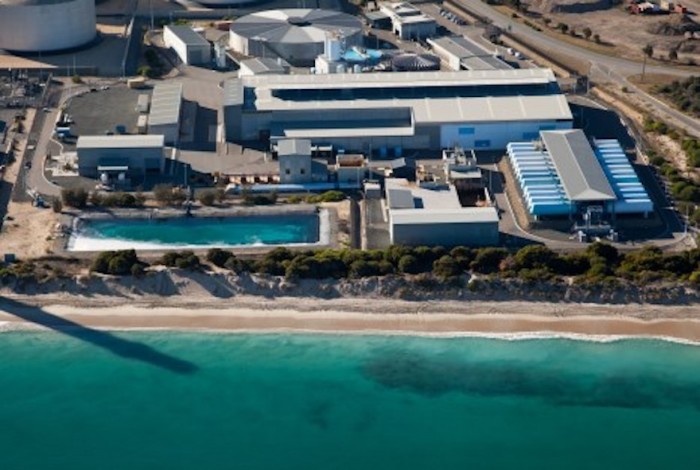
Right now, the city of Cape Town is caught in the aftermath of its third successive winter without significant rainfall. In response to the water scarcity crisis, a fleet of saltwater desalination plants will be installed around the city within a few weeks to draw drinkable water from the sea. The Mother City’s plight is by no means unique – drought has crippled other major cities around the world including Rome, Los Angeles and Lima, with increasing intensity in recent years.
Approximately 1 per cent of the world's population is dependent on desalinated water to meet daily needs. But the UN projects that 14 per cent of the world's population will encounter water scarcity by 2025.
However, some characteristics prohibit desalination from being a totally sustainable way to provide water for people in certain parts of the world. So what exactly does desalination mean?
THE BASICS
There are several methods of saltwater desalination, but the chief process (known as reverse osmosis) involves the removal of salts and other harmful particles like bacteria, viruses and colloids from seawater using high-tech machinery to make it suitable for drinking and irrigation. When rainfall and natural rivers no longer deliver potable water to a coastal city, the abundance of the ocean becomes the next best thing.
Desalination, in small scale, has become a bulwark in the design of large seafaring vessels such as cruise ships and submarines that simply draw from their watery environment to nourish people on board. It has become particularly pertinent in arid countries such as Australia, which traditionally has depended on rainfall collected behind dams. Saudi Arabia, one of the world’s most parched regions, happens to be the largest producer of desalinated water in the world with 27 plants lining its coasts.
THE PROBLEM
The overall cost of building desalination plants is significantly higher than tapping into groundwater, recycling wastewater or putting water conservation in action. This makes it harder for developing countries to use the ocean as a potable water resource. While the real estate needed and the related cost of construction are sizeable already, the majority of expenditure goes directly to the energy needed to run the operation. Since energy prices vary, actual costs to keep desalination going will fluctuate substantially and will no doubt affect taxation.
Even more dubious is the impact desalination has on the immediate marine environment. Reverse osmosis processes produce huge amounts of brine. After banishing contaminants from potable water, the undesirable liquid left behind contains cleaning chemicals, their byproducts and heavy metal particles which are normally pumped back into the sea. The resulting toxic brine is denser than seawater and sinks to the ocean floor, damaging sea life and the habitats that lie there.
According to Design Indaba Conference speaker Carina Bonse and her investigative campaign, Swimming In It, Cape Town’s bays can do without additional pollution. Bonse charted the effect that sewage runoff has on popular beaches such as Hout Bay and Camps Bay and the danger it poses to our health. Pumping sewage into seawater puts beach-goers and surfers at risk of contracting illnesses such as E. coli, hepatitis, skin, ear and respiratory infections. The same is true for other coastal cities that deposit urban sewage into the sea – this, in tandem with brine produced by desalination plants, could reap hideous long-term damage to our oceans.
THE PROGRESS
Some methods of desalination are in development that do not excrete brine. Evaporation ponds, solar stills and condensation traps do not rely on chemical cleaning or burn fossil fuels. They do not utilise external harmful parts such as heavy metal components and thus do not produce toxic waste. Hopefully these methods of generating potable water will become popular enough to become standard practice over the more speedy yet damaging chemical desalination process.
For a city under threat of running out of water like Cape Town currently is, it is prudent to look to other parts of the world that pulled themselves out of a similar crisis. The solution lies in combining smart desalination, clever wastewater management and diligent conservation into a multi-pronged approach to supplying water. Ironically, the best example of a region that generates a profusion of potable water in this way is a small country nestled in the middle of a desert – Israel.
Spurred on by necessity and powered by impressive technological innovations, Israel has become the world’s water superpower after acting swiftly and responsibly in the face of crisis. The video below, produced by Prager University and narrated by author Seth Siegel, puts Israel’s unique rise as a water goliath in perspective.
“By reusing wastewater, by making desalination affordable, by rethinking irrigation, and by developing an array of sophisticated water conservation techniques, Israel not only has a sufficiency of water, but an abundance of it,” explains Siegel, “What Israel has done, other nations can do, too. And while it’s a lot to hope for, cooperation on water issues could become the basis for cooperation on other issues as well.”






